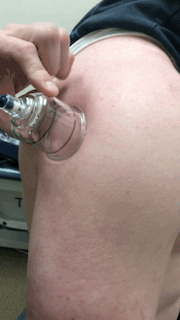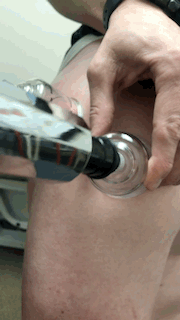Back in the summer of 2016, Michael Phelps was ending his decorated career as an Olympic swimmer. He won more gold medals at the Rio de Janeiro Olympics than 66 other countries participating that year. Despite his amazing accomplishment, all people wanted to talk about were the purple dots on his back. Did he have a fancy new tattoo? Or perhaps leprosy? Maybe he got in an argument with a vacuum cleaner? As it turned out, the purple dots on Michael’s skin were the result of an ancient Chinese healing practice called cupping.
Known in the medical field as myofascial decompression, cupping actually began as early as 400 BC in Greece. The Chinese made the technique more common, using cupping to treat internal disease, structural issues, and certain illnesses. They heated up glass cups with a flame and placed them over the body, causing fluid to rise toward the surface of the skin.
While some therapists still use fire, nowadays it is more common to use an air pump device to create suction. This device uses suction to pull the skin up, causing the decompression effect. After just a few minutes, the capillaries beneath the surface begin to rupture, potentially creating a circular bruise. Sort of like a medically induced hickey, for lack of a better term. Reduced soreness and a quicker healing process are just two of the benefits of this process. Because of this, all varieties and ages can benefit from cupping, including athletes, geriatrics, and everyone in between. Please call our office with any questions you may have about cupping and we will be happy to assist you,
Post written by: Casey Badder, DPT



